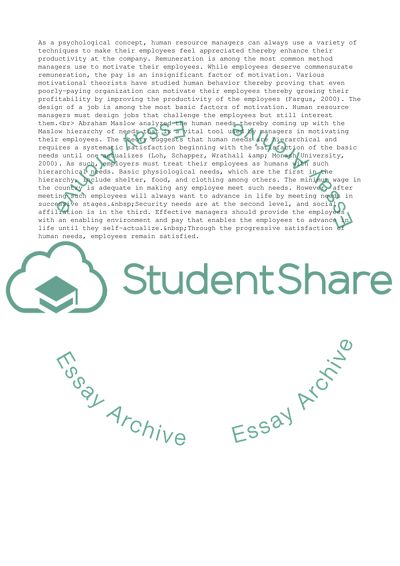Cite this document
(“How supermarkets motivate their staff: The case of ASDA, Isle of Dogs Literature review”, n.d.)
How supermarkets motivate their staff: The case of ASDA, Isle of Dogs Literature review. Retrieved from https://studentshare.org/business/1681674-how-supermarkets-motivate-their-staff-the-case-of-asda-isle-of-dogs
How supermarkets motivate their staff: The case of ASDA, Isle of Dogs Literature review. Retrieved from https://studentshare.org/business/1681674-how-supermarkets-motivate-their-staff-the-case-of-asda-isle-of-dogs
(How Supermarkets Motivate Their Staff: The Case of ASDA, Isle of Dogs Literature Review)
How Supermarkets Motivate Their Staff: The Case of ASDA, Isle of Dogs Literature Review. https://studentshare.org/business/1681674-how-supermarkets-motivate-their-staff-the-case-of-asda-isle-of-dogs.
How Supermarkets Motivate Their Staff: The Case of ASDA, Isle of Dogs Literature Review. https://studentshare.org/business/1681674-how-supermarkets-motivate-their-staff-the-case-of-asda-isle-of-dogs.
“How Supermarkets Motivate Their Staff: The Case of ASDA, Isle of Dogs Literature Review”, n.d. https://studentshare.org/business/1681674-how-supermarkets-motivate-their-staff-the-case-of-asda-isle-of-dogs.


